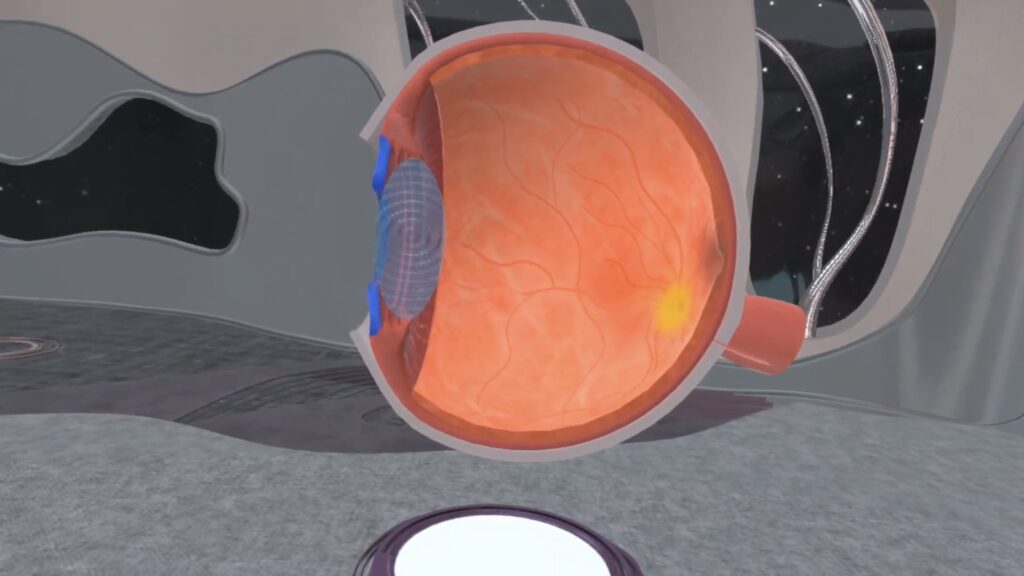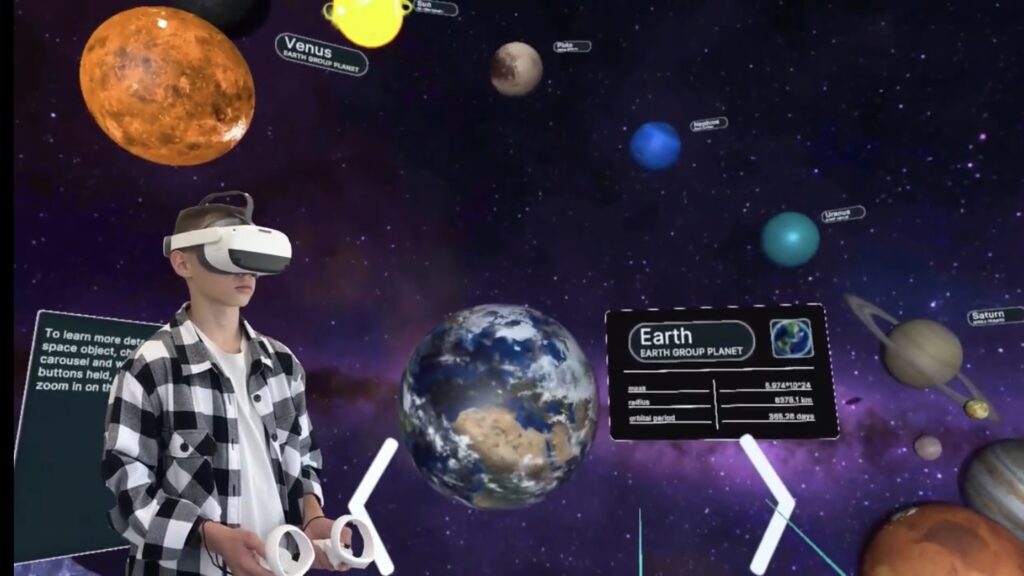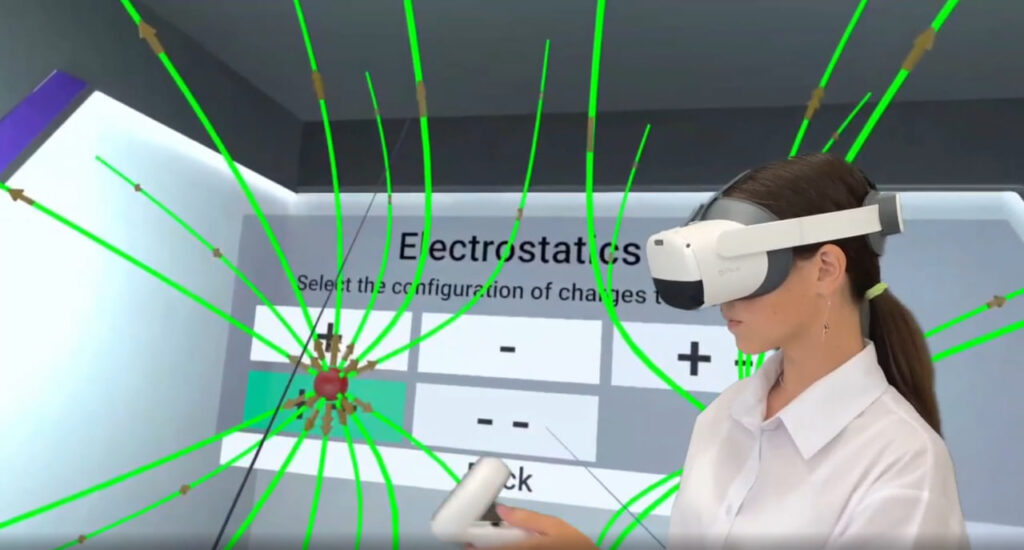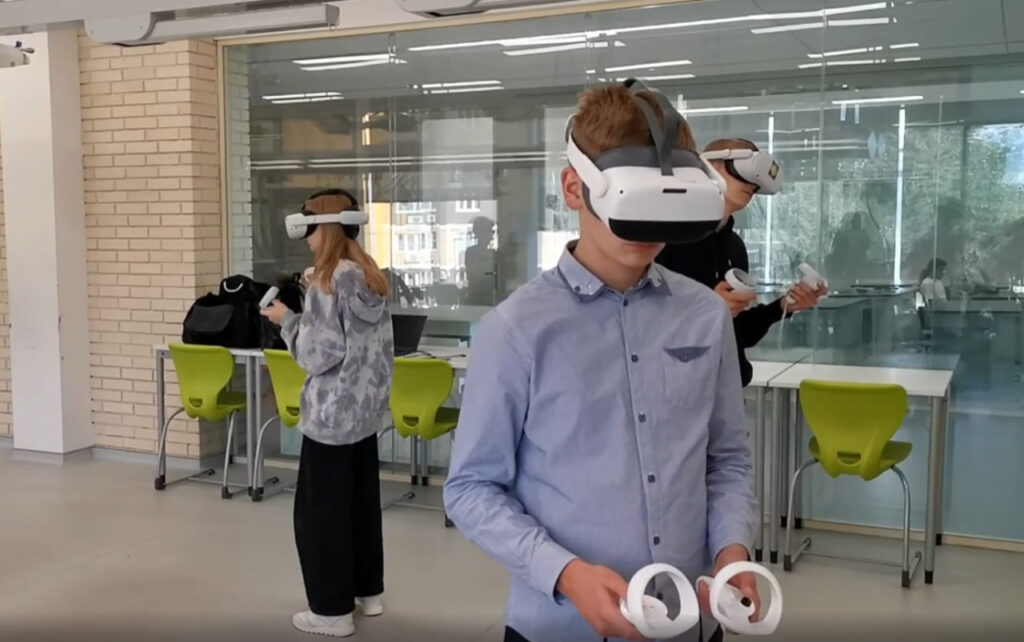

“Is it really okay to perform inherently dangerous experiments in a safe, virtual setting, or is it not?” This provocative question captures the essence of today’s educational debate around virtual reality in education. From VR physics labs exploring lasers too powerful for real classrooms to VR biology simulations shining bright lights on virtual pupils—these experiences push the boundaries of what we’d consider “normal.” Yet they also highlight the benefits of virtual reality in education, giving students a chance to learn without real-world risks.

Educational technology has always promised to expand teaching possibilities, but VR learning takes that promise to new heights. In subjects like VR chemistry, students can perform explosive or toxic reactions with zero physical danger, while in VR physics they can use high-intensity lasers not feasible for normal classrooms. On one hand, this seems like the ultimate solution: no chance of chemical accidents, no frantic cleanup, and no missing equipment. On the other, it sparks an ethical debate—can students truly appreciate the gravity of real hazards if mistakes in virtual worlds don’t have tangible consequences?
Biology Eye Reflex

In traditional VR biology classes, learning about the pupillary reflex might involve shining a bright flashlight – uncomfortable at best, unsafe at worst. In a virtual reality classroom, you can mimic this reflex by watching a virtual pupil change without hurting anyone.
High-Risk Chemical Reactions
Many standard chemistry reactions taught in schools are either explosive, toxic, or both. Typically, students see only the equations in textbooks, rarely handling these materials in person. Virtual reality learning makes hands-on experiences possible, allowing learners to observe results safely and develop deeper conceptual understanding.
Space Missions

Real-life space missions have razor-thin margins for error. As discussed in a recent XReady Lab article, a mission-based VR space simulation can let students experiment with environment parameters—like customizing a spacesuit—to land on a celestial body. But is it healthy for them to get used to mistakes without facing real consequences? That’s the question we invite you to ponder.
“Is it normal to experiment and let things fail, even if it’s in a virtual environment?” This dilemma goes beyond just optics or toxic reactions in a lab; it reaches into scenarios like VR school safety training. Consider:
Critics argue that if virtual mistakes yield no negative fallout, students might not grasp the genuine stakes of real-life experiments. Proponents counter that VR in schools is about learning first, giving students an environment where they can fail safely and learn from errors. Proper context and debriefing can bridge that gap, ensuring they develop respect for real-world consequences.

As virtual reality and education continue to converge, VR solutions for schools are evolving into powerful platforms that satisfy students’ natural curiosity:
By removing the logistical complexities of assembling equipment and cleaning up afterward, VR technology in education frees teachers to focus on delivering high-quality instruction and mentorship. This efficient use of class time enables educators to pivot from mundane tasks toward inspiring students, helping them become bold thinkers ready to tackle tomorrow’s challenges.

We’d love your thoughts on social media: Is it acceptable for students to treat risky scenarios casually because they’re in a digital environment? Or is it precisely because VR education services offer a cushion that they can experiment more freely and learn from mistakes without harm?
Whether you view VR physics labs with invisible lasers or VR chemistry reactions as an exciting advancement or a concerning drift from reality, there’s no denying the benefits of VR in education. By transforming risky, near-impossible, or ethically problematic experiments into safe, immersive activities, virtual reality and education together foster deeper engagement and innovative learning.
However, the conversation doesn’t end here:
We invite you to join the discussion, share your views, and explore new perspectives on the evolving role of VR in the classroom. As education continues to evolve, finding the sweet spot between safety and authentic experience remains a pivotal challenge—one that XReady Lab and forward-thinking educators strive to tackle head-on.
Technology in schools is more than a trend. It’s a chance to give students interactive classroom activities that mirror real-world scenarios while keeping them safe. The debate on whether it’s “normal” to conduct dangerous experiments in a safe, virtual environment might not have one right answer—but it’s a discussion worth having for the future of learning.
Frequently Asked
We prodive VR biology, VR physics, and VR chemistry simulations. Please, check our catalog.
Please, fill the form to get demo labs for free.
Please contact our customer support service at support@xreadylab.com or book a call with the team to find out the conditions and book the VR class set up at your school.
Subscription to XReady Lab interactive VR labs. If you are a school, then you are also given access to the VR classroom system. VR class system helps you easily launch VR lessons for a large number of students, follow the experience of each student, as well as customise the content without developers.
We adhere to the world’s generally accepted recommendations and research. Our products are suitable for children from 12 years old.